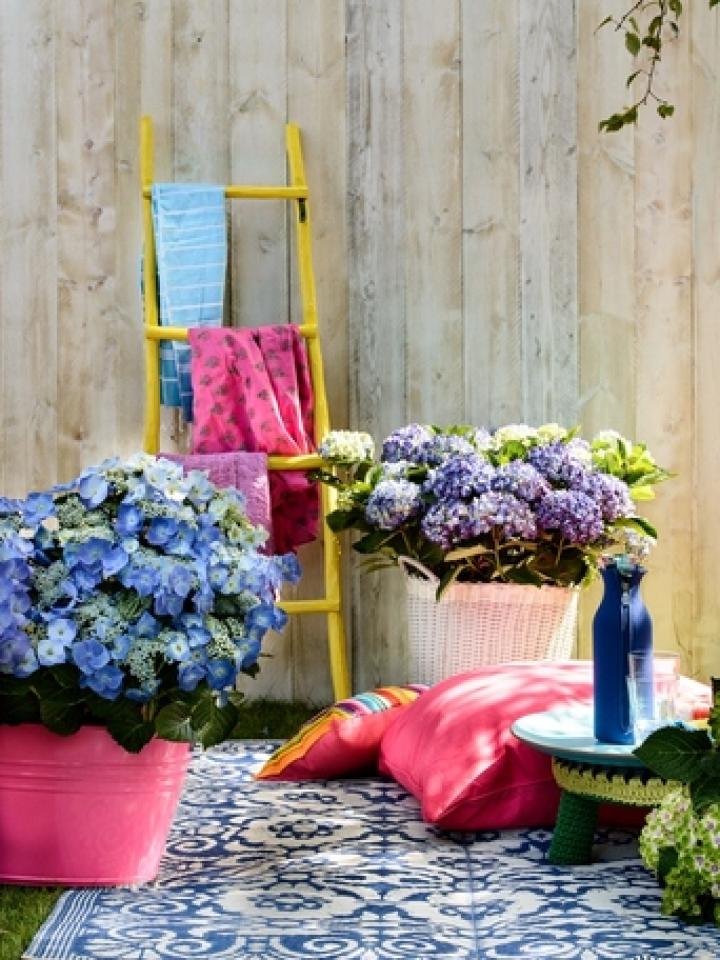HYDRANGEA: CHARACTERISTICS AND FLOWERS
Hydrangeas belong to the hydrangea family (Hydrangeaceae). They can be recognised by their beautifully large flower clusters, in a bulb or cone shape. They are usually white, pink or blue or purple in colour. or a combination of these. The flowering period of hydrangeas varies from spring to early autumn, depending on the variety. The hydrangea has a flowering peak in the summer months.
In spring and summer, you mainly see pink, purple, white, green and blue hydrangeas. In late summer and autumn, you will hydrangeas with a green, red or brown hue, which are wonderfully appropriate for autumn and dry well. There are single- or double-flowered varieties, spherical hydrangeas, hydrangeas with small flowers in the centre and large petals at the edge (border bloomers) or with a plume-like shape. It's hard to choose your favourite!
SOIL DETERMINES THE COLOUR OF HYDRANGEAS
The colour of hydrangeas is determined by the acidity of the soil in which they grow. In acidic soil (pH value of 5 or less), the flowers turn blue. If plants are planted in calcareous soil, or in soil low in iron or aluminium, they will end up with pink flowers. So your blue hydrangea may well start to turn pink, or vice versa. You can influence the colour of your hydrangeas by adding lime or acidic soil to your soil.
HYDRANGEA SPECIES
There are several species of hydrangea. The species below are the best known and most common:
- Hydrangea macrophylla: this species is also called the ‘common hydrangea’ or ‘peasant hydrangea’. The species is known for its large, globular flower heads and is available in different colours, such as pink, blue, purple and white. The shrub usually grows about 1-2 metres tall.
- Hydrangea paniculata: this species is also known as ‘panicle hydrangea’. Plume hydrangeas have cone-shaped flower clusters and dark green leaves. They are usually white when newly blooming and can gradually change to pinkish-red. If not pruned, this shrub can grow metres tall (up to 4 metres).
- Hydrangea arborescens: this species is also called ‘Annabelle Hydrangea’ and is known for its large, spherical white flowers. This species grows about 1.25-1.5 metres tall.
- Hydrangea quercifolia: this, different species is also called ‘oakleaf hydrangea’ and can be recognised by its unique, oak-leaf-like leaves with cone-shaped, white flower clusters. The leaves take on a reddish-brown, autumnal colour. This species can grow up to 1.5 metres tall.
- Hydrangea involucrata: this species is a small, umbelliferous shrub also known as ‘bullet hydrangea’, because the flower buds are bullet-shaped before opening. This species stays relatively low to the ground and usually doesn't grow taller than 80 centimetres.
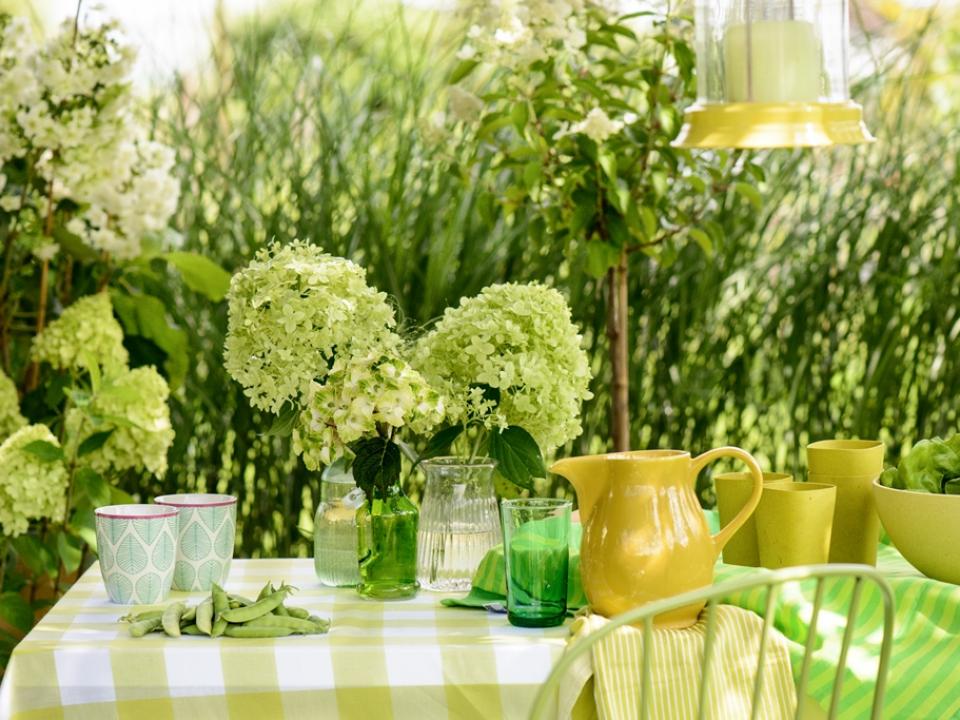
HOW TO CARE FOR CUT HYDRANGEAS IN A VASE
Have you brought a joyous bunch of hydrangeas home? Then you'll want them to last for as long as possible. Take a look at our following tips for hydrangea care:
- Cut off a small part of the bottom of the stems at an angle.
- Choose a clean vase and fill it with room temperature tap water.
- Don't put your vase with hydrangeas in a draught, in full sun, near the stove or next to the fruit bowl.
- Add cut flower food to the water for a longer shelf life and refill the vase regularly with tap water.
- Make sure no leaves hang in the vase water to minimise bacterial growth.
- You can hydrangeas from your garden dry out and display them as dried flowers without water. That way you can enjoy the blooms for an extra long time!
INDOOR POTTED HYDRANGEAS
Indoor hydrangeas are special, small varieties of the Hydrangea macrophylla (peasant hydrangea). They are exuberant, beautiful plants for your home and come in many different colours, such as pink, green, white and blue. Indoors, the hydrangea likes a bright spot and moist soil. Give it a pot with drainage holes and give it a weekly dip in a sink full of water. After soaking, place a saucer underneath the flower pot so that excess water drains away.
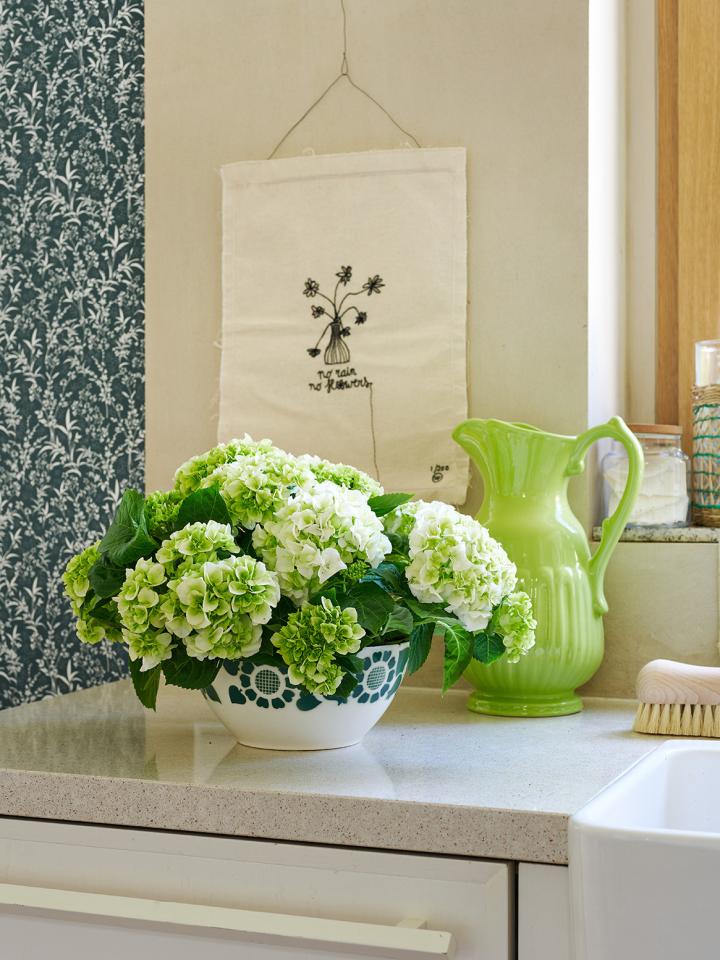
HYDRANGEA PLANTING AND CARE
Are you planting hydrangea in your garden? Check out our step-by-step plan for planting garden plants and see our tips below for planting tips specific to hydrangeas:
- The best time to plant hydrangeas is in spring (March-April), when the chance of frost has passed.
- Hydrangeas thrive best in a spot in semi-shade or shade (north or west-facing). Some varieties, such as the Annabelle, can also tolerate quite a bit of sunlight provided there is sufficient moisture in the soil. A sheltered spot that ensures hydrangea is not in full afternoon sun is always preferable.
- Ensure well-drained, humus-rich soil.
- Hydrangeas thrive on different types of soil. As described above, the soil acidity level determines the colour of the hydrangea.
- Give hydrangeas plenty of water during hot and dry months. They like moist soil.
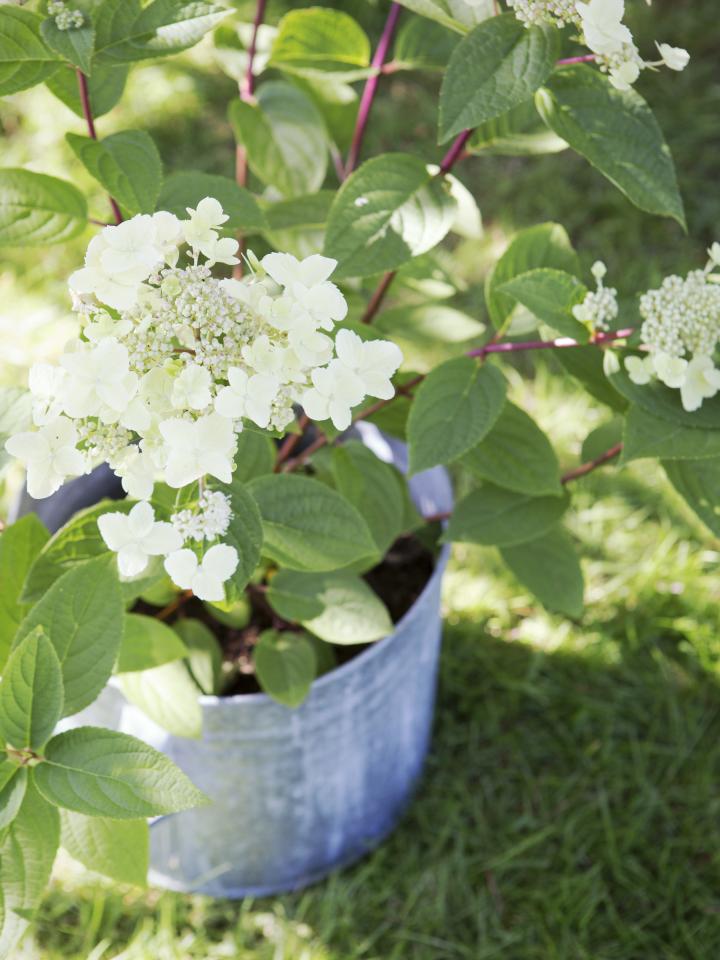
POTTED HYDRANGEA PLANTS
Planting a hydrangea in a pot is ideal if you have a smaller garden, balcony or patio. Some hydrangeas are more suitable for planting in a pot than others; because of its strong branches, the ‘common hydrangea’ is very suitable as a pot plant. Make sure the pot is big enough, as hydrangeas grow a lot, and ensure the pot has good drainage. Preferably, you should use potting soil that is especially suited for hydrangeas, which will ensure the most beautiful blooms!
WHEN ARE HOW SHOULD YOU PRUNE HYDRANGEAS?
Hydrangeas grow fast. To prevent them from growing too big and to ensure beautiful blooms, pruning is very necessary. We recommend that you leave your hydrangeas over winter and only prune them in spring, which protects the buds from frost and ensures that you can enjoy the flowers for longer. Even in winter, faded hydrangeas are a beautiful sight.
Exactly how you prune hydrangeas depends on the variety: do you have a type that flowers on annual wood, or on old wood (also called biennial wood)? Most hydrangeas flower on old wood growth - i.e., they flower on the buds that were established the year before. Some hydrangeas flower on annual wood, meaning they flower on the branches formed the same year.
- Annual wood-flowering hydrangeas: preferably, you should prune these hydrangeas in early spring (March), when the chance of severe frost has passed, to avoid frost damage to pruning wounds. Prune the hydrangeas to about 10-15 centimetres above the ground.
- Hydrangeas that flower on annual wood include Hydrangea paniculata (panicle hydrangea) and Hydrangea arborescens (Annabelle).
- Old-wood flowering hydrangeas: pruning these hydrangeas is not always necessary, and when it is, you can be less thorough than hydrangeas which flower on annual wood. You can choose to remove the spent flowers only in March or April, and not prune anything else. If you want to keep growth down, cut a third of the old branches to 15 centimetres above the ground. If you want to prune more rigorously because the plant has grown too big, cut off half of the older branches to 10 centimetres above the ground.
- Hydrangeas that flower on old wood include Hydrangea macrophylla, Hydrangea quercifolia and Hydrangea involucrata.
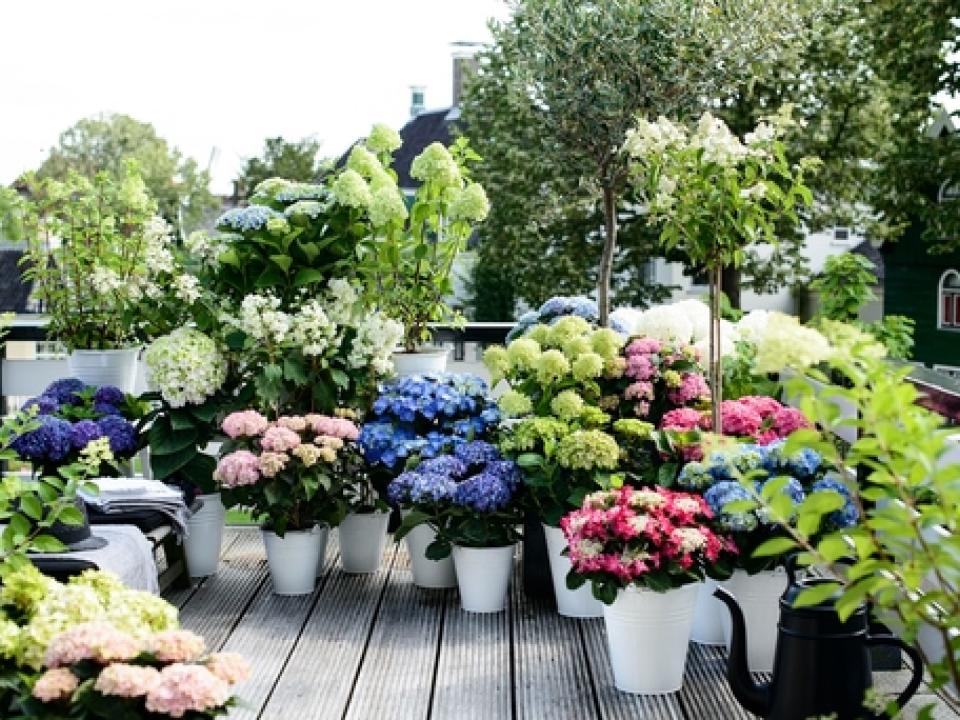
HYDRANGEA MEANING AND SYMBOLISM
The hydrangea is rich in symbolism. The flower represents gratitude, sincere feelings, grace and beauty. It also radiates abundance, thisbecause of its lavish, generous and often bulbous shape. Hydrangea's many small flowers symbolise love, harmony and peace, making it perfect for use in a luxurious floral arrangement at weddings and birthdays, but also suitable for a lovely funeral bouquet.
HYDRANGEA ORIGINS
Hydrangea has Asian and American roots. The plant is native to China, Japan, North and South America. French botanist Philibert Commerçon is often credited with discovering the plant during an expedition to China in the 18th century. Between 1760-1770, Europe was introduced to its first hydrangea. It's said that Philibert sent a specimen of the hydrangea to his fellow botanist Joseph Banks, who introduced the plant to Britain. From then on, hydrangea spread rapidly in Europe and the plant quickly gained popularity. Today, hydrangea is a very popular plant because of its decorative value and the fact that it thrives in our temperate climate.
WHERE DOES THE NAME HYDRANGEA COME FROM?
The word Hydrangea comes from ‘hydro’ (water) and ‘angeion’ (pitcher or vessel). This name was probably chosen because of the flower's characteristic convex shape, which resembles a pitcher or jug. The name also reflects the water requirements of this plant, as hydrangeas thrive on moist soil and need regular water to grow and flower. Exactly how the name hydrangea was chosen is not clear. Various theories exist concerning the naming:
- The name hydrangea was probably coined by French botanist Philibert Commerçon. What source of inspiration he had is not entirely clear, but he perhaps named the flower after a woman he adored. For example, he had ties to Hortesse de Nassau, the daughter of Prince of Nassau.
- Another explanation for the name hydrangea is that it comes from a free translation of the Latin ‘from the garden’. Indeed, the Latin ‘hortus’, means ‘garden’. Philibert Commerçon is said to have discovered the hydrangea in a garden belonging to the king of Mauritius.
